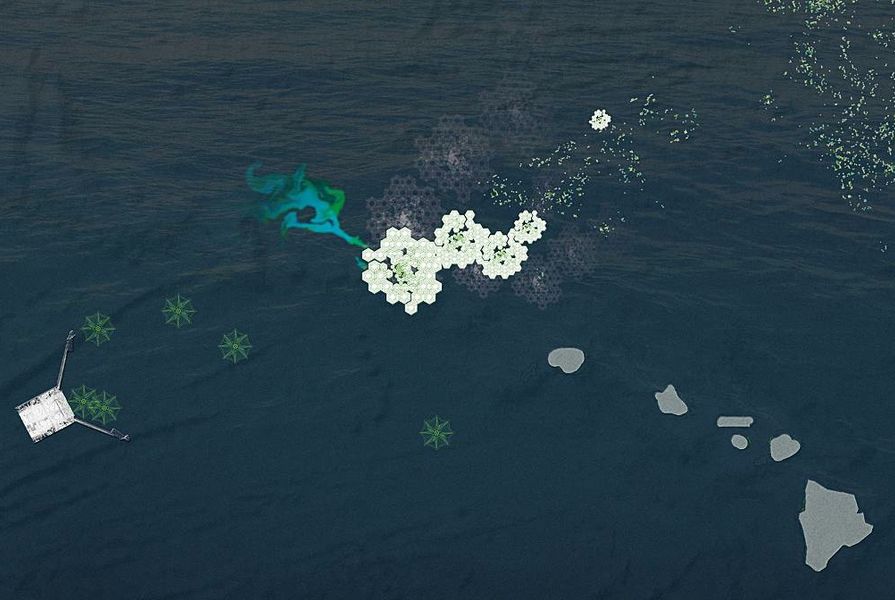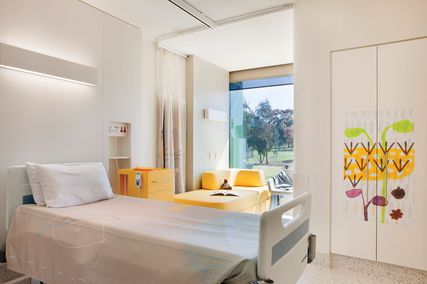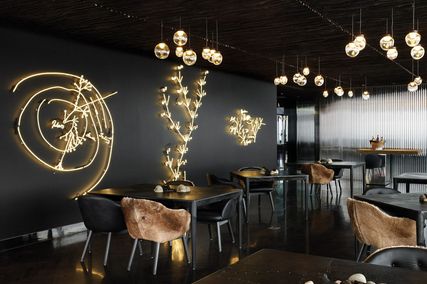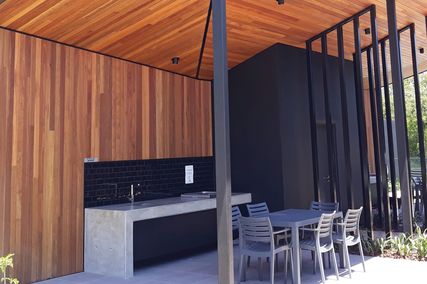Jury statement
In the world‘s oceans sits a plastic wasteland of flotsam and jetsam discarded by humans the world over. Plastic Soup controversially extends our notion of “landscape” by suggesting that the floating island of plastic be put to good use. Estimated to be some seven million square kilometres in area, this proposal suggests that marine colonizer species be grown within the soup to enable secondary and tertiary species to eventually colonize the island, continually expanding and contracting its form, size and mass. The jury expressed real delight in such a bold exploration of ecological terra nullius in which new islands and landmass are exploited and eventually inhabited by food chain species, resulting in a clean up of the plastic waste problem. The proposal extends the notion of landscape architecture beyond land-based design activities into a world of watery ecological colonization akin to new world creation.
Project description
This project creates a dynamic relationship between landscape, inhabitation, infrastructure, trade, tourism and waste. It reformulates landscape and city as a series of choreographed encounters.
The North Pacific Gyre currently holds one hundred million tonnes of refuse that is expected to double in size over the next decade. What is described as “the plastic soup” has been trapped by ocean currents and estimates on size range from seven million square kilometres (the size of Australia) to more than fifteen million square kilometres. Ocean currents carry debris, which consists mostly of small plastic particles suspended at or just below the surface, making it impossible to detect by aircraft or satellite. It can take five years to reach the gyre from the west coast of North America and approximately one year from the east coast of Asia.
An estimated 80 percent of the garbage comes from land-based sources and 20 percent from ships. It is moved around by the North Pacific Drift and the Gulf Stream. Rubber ducks lost off a cargo container in 1992 are still being found on coasts all around the world, carried by the ocean currents.
Rather than make small-scale attempts to clean it up, we created “living” entities to engage with this dynamic “soup.” The species take on roles of recyclers, consumers and producers. On their journey, some species are tracked via GPS and become spaces for inhabitation. Others feed off plastic from the “soup” and become part of a new farming and recycling infrastructure. Further species attract and feed plankton, becoming a carbon sink and food source for marine life. Together, the species intervene in and change the cycles of shipping, trade, tourism and fishing and become spaces for inhabitation.
The drifting city is a series of encounters in the plastic soup. The city accumulates and disperses, expands and contracts, grows and decays.
Source
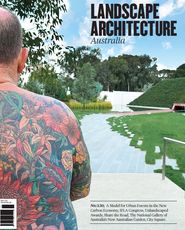
Awarded Project
Published online: 28 Sep 2011
Words:
2011 Unlandscaped Jury
Issue
Landscape Architecture Australia, May 2011

